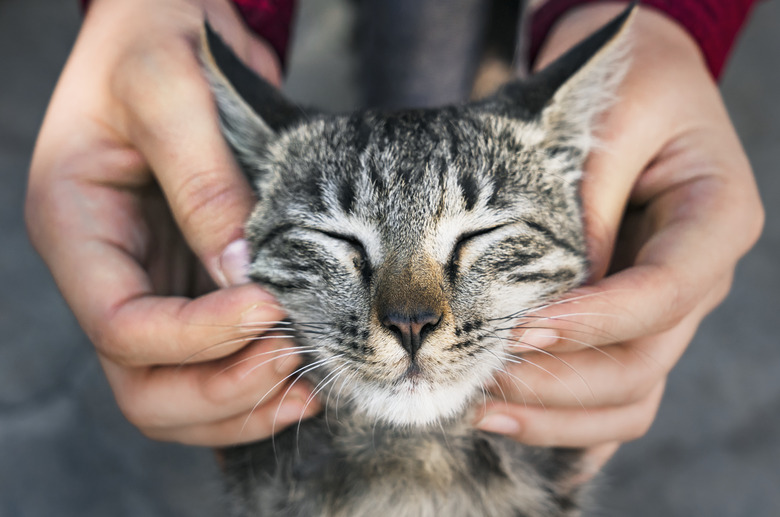Science Projects With Cats
Cats make interesting and effective test subjects for school science projects. Since many people own cats as pets – or know others who do – students can easily access these furry test subjects. Make sure you have a parent around to help you handle the cat in case you need an extra pair of hands for your experiment.
The Fat Cat Experiment
The Fat Cat Experiment
This experiment allows students to study the average weight of cats, and identify the weight threshold in which cats go from average to "fat." The activity will involve the student collecting many samples of cats' weights, so it may be effective to visit a veterinarian's office and ask them for the weight of 12 to 15 cats. Record all of the known variables, such as the cats' gender and age. Create a table for the data and make your conclusion about what the average weight is, and when – in terms of pounds – a cat is considered "fat."
Paw Prints
Paw Prints
Students may use pet cats to determine whether or not felines have individual paw prints that distinguish them from other cats, similarly to how humans have individual fingerprints. This project will require the use of fingerprinting powder. Simply dip the cat's paw into the powder and have an index card nearby that you can press the paw onto to create a paw print. Do this with all four of the cat's paws and make note if all of the paw prints are identical, or if they are each different. Conduct this experiment with more than one test subject to get more sound data. Draw your conclusion at the end and present your many paw prints to the rest of the class.
Color Stimulation
Color Stimulation
If you have ever wondered whether cats prefer certain colors over others, then you can turn that curiosity into a science project for school. Use your pet cat and present the cat with three to five identical toys in different colors. See which color toy the cat is attracted to. Perform this trial multiple times throughout the day or night and record your observations. Perform the same test with other cats if you have them available. Review your notes and determine if the cat(s) is attracted to one particular color over the others. If so, you can conclude that the cat has a color preference.
Lefties or Righties
Lefties or Righties
Draw up a hypothesis about whether or not you believe that cats have a left or right-handed preference when it comes to what they use their paws for (playing, scratching). Observe your cat's behavior for a period of time, and make note of which paw he uses the most. It is also a good idea to make note of what the cat uses the paws for. You may find that the cat likes to hit his play toys with his front right paw, but scratches at the carpet with his front left paw. See if you can find any patterns that would conclude whether the cat uses the left or right side more.
Cite This Article
MLA
Sheahan, Kyra. "Science Projects With Cats" sciencing.com, https://www.sciencing.com/science-projects-with-cats-12747581/. 15 November 2019.
APA
Sheahan, Kyra. (2019, November 15). Science Projects With Cats. sciencing.com. Retrieved from https://www.sciencing.com/science-projects-with-cats-12747581/
Chicago
Sheahan, Kyra. Science Projects With Cats last modified August 30, 2022. https://www.sciencing.com/science-projects-with-cats-12747581/
